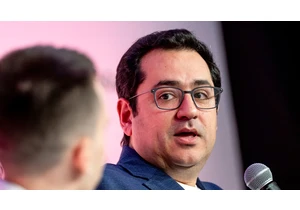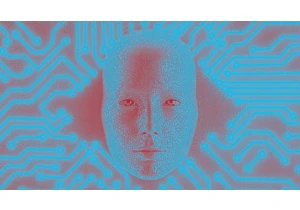Is he Samuel Bankman-Fried, a liar and a “celebrity chaser” who orchestrated a multibillion-dollar fraud? Or is he “Sam,” an “awkward high school math nerd” with sloppy clothes and messy hair who meant well and did his best as his crypto exchange collapsed?
In closing statements in Bankman-Fried’s federal fraud trial Wednesday, both the prosecution and the defense tried to convince the jury of their version of the defendant. He is charged with defrauding customers and investors of FTX, his crypto exchange, and lenders to Alameda Research, the crypto trading firm he started and largely owned. Judge Lewis A. Kaplan said he expects jury deliberations to start sometime Thursday.
The scale of the alleged fraud is staggering, with prosecutors accusing Bankman-Fried of taking $13 billion in deposits that customers had made on FTX and withdrawing it, via Alameda, to spend on real estate, investments, celebrity partnerships, and more. (The sum of the money taken from FTX depends on when, time-wise, it is measured, as it increased and decreased, so prosecutors have referred to different billion-dollar figures throughout the trial.)
“Where did the money go? What happened? Who was responsible?” prosecutor Nicolas Roos said in his opening argument, and pointed to Bankman-Fried, seated a few yards away from the podium where Roos addressed the jury. “This man: Samuel Bankman-Fried.”
“He spent his customers’ money, and he lied about it,” Roos said.
Roos reviewed how evasive Bankman-Fried had been when he testified in his own defense over three days. On direct examination, meaning that his lawyer Mark Cohen was asking the questions, Bankman-Fried was “smooth” and “practiced,” and defined 50 terms with a “perfect memory,” Roos said. On cross-examination from the prosecution, though, “he was a different person, suddenly” and uttered a version of “I do not recall” 140 times, while he’d never said that on direct, Roos said, and asked for terms to be defined that he’d defined himself on direct.
While Roos’ opening was punchy and easy to follow, Cohen’s was sleepier. Cohen had a harder job in explaining away his somewhat unsympathetic client’s actions, but centered on Bankman-Fried being a CEO who made tough and sometimes bad decisions, but was not trying to defraud anyone. “The government has sought to turn Sam into some sort of villain, some sort of monster,” Cohen said, with “photos of him looking awkward next to celebrities” and “photos of him with big hair.” He was “doing the best he can under very, very difficult circumstances,” he said, and as FTX imploded, was part of a group “trying to figure out what had happened.”
As the prosecution was expected to do from the trial’s beginning, Roos framed the case simply, despite the myriad of terms jurors have learned about, from autodeleveraging to staking to blockchain. “This is not about complicated issues of crypto,” Roos said. “It’s about deceit. It’s about lies. It’s about stealing. It’s about greed.”
Roos argued that Bankman-Fried had spent FTX customers’ money deposited to the exchange, which prosecutors and witnesses have said he did by funneling that money through Alameda, then spending it on things like investments, real estate, paying back Alameda lenders, and corporate sponsorships and endorsement deals with people like Tom Brady and Steph Curry.
“There’s no serious dispute” that customers believed their money—in the form of deposits to the FTX exchange—was theirs, and “could not be taken or borrowed,” and that was what FTX and Alameda employees who testified knew to be the case as well, Roos said. “It was a universal view from the witnesses you heard: Customer funds belonged to customers.”
Bankman-Fried accessed the FTX customer funds through a few ways, Roos said, reviewing earlier testimony in the case, particularly from Bankman-Fried’s top deputies and friends Caroline Ellison, Nishad Singh and Gary Wang, who all plead guilty to fraud and are all cooperating against him. One was through changes to FTX’s computer code that gave Alameda, and only Alameda, a $65 billion line of credit on the exchange, meaning it could withdraw up to that number from the exchange. The second was a code change allowing Alameda’s balances on the exchange to become negative without facing automatic liquidation. The third was having FTX customers wire their deposits to a bank account that was actually Alameda’s. (Bankman-Fried’s defense has said this third item was because FTX initially couldn’t get bank accounts, so Alameda was a custodian of the FTX customer funds, and Bankman-Fried thought he could borrow that money. Prosecutors have said that Alameda was supposed to set aside the funds and not touch them.)
The seven charges against Bankman-Fried include not just fraud against FTX customers, but fraud against Alameda lenders. Reviewing the evidence for those charges, Roos called up a spreadsheet Ellison, then Alameda’s CEO, testified she’d prepared in June 2022 before she sent them to lenders, and that Bankman-Fried had reviewed. It showed Alameda’s actual balance sheet, including the billions taken from FTX and billions it had lent to Bankman-Fried and other executives, and seven alternative balance sheets. The “Alt 7” sheet simply deleted Alameda’s debt to FTX and the billions it had lent to executives, and that was the one Bankman-Fried told her to send out, she testified.
Roos said Bankman-Fried’s secrecy about these coding elements and the bank account proved criminal intent. “If he thought this was legit,” why keep it a secret? Roos asked. “The reason it is secret is because he knows it’s wrong.”
In his closing, Cohen responded that Bankman-Fried wasn’t secretive, and that he acted in good faith. The code changes were for “valid business reasons” after some snafus with FTX’s automated risk-management system, he said, and the discussions about Alameda’s balance sheets were “differences in opinion” about how to properly value Alameda. If Bankman-Fried were bent on fraud, Cohen said, why would he testify multiple times before Congress? Why would he bother repaying lenders at all?
Roos, who gave his closing prior to Cohen’s, said he expected the defense would argue a good-faith approach. However, he said, lots of evidence undercut that: Bankman-Fried’s policy of auto-deleting Signal chats, Ellison’s testimony that she referred to the money owed to FTX obliquely because Bankman-Fried didn’t want anything potentially damning written down explicitly; and ex-FTX lawyer Can Sun’s testimony about how, as FTX imploded, Bankman-Fried asked him for “legal justification” for Alameda taking FTX customer money. (Sun said he told Bankman-Fried could not find any, and resigned from FTX.)
“If you wrongfully take someone else’s money, even if you think you might be able later to pay it back, it’s still fraud,” Roos said.
Connectez-vous pour ajouter un commentaire
Autres messages de ce groupe


Anthropic released on Monday its Claude 3.7 Sonnet model, which it says returns results faster and can show the user the “chain of thought” it follows to reach an answer. This latest model also po

This morning, Apple announced its largest spend commitment to da


In 2024, Amazon introduced its AI-powered HR ass

Lore isn’t just for games like The Elder Scrolls or films like The Lord of the Rings—online, it has evolved into something entirely new.
The Old English word made the s

Ben Sweeny, the salesman-turned-comedian behind that online persona Corporate Sween, says that bosses should waterboard their employees.
“Some companies drown their employees with
